Last updated 1.9.14
MILITARY WRECKS AND RELICS - 1960sRefer to the Warbirds Directory on this site for the detailed histories of most of these aircraft
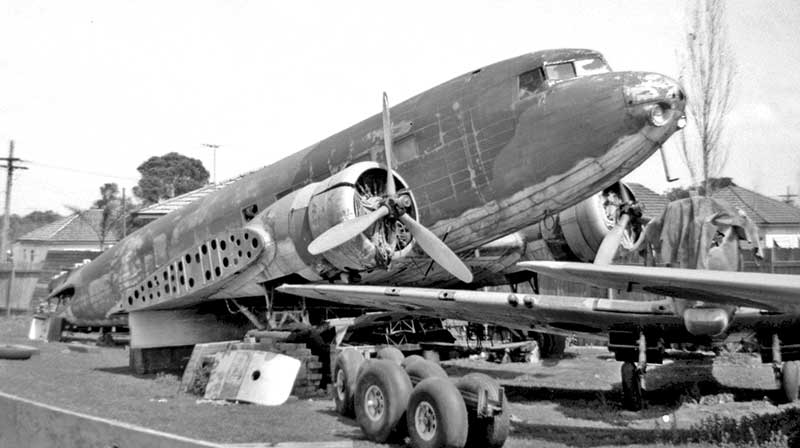
Marshall Airways purchased five RAAF DC-2s from military disposals after WWII with plans to start an airline service but DCA
would not grant an airline licence. A30-14 was still in camouflage with name ME MATE in white under the cockpit. This yard
held other aircraft: Spitfire MV239 stands on its wheels and the wing in the foreground is a Japanese Nakajima Ike fighter.
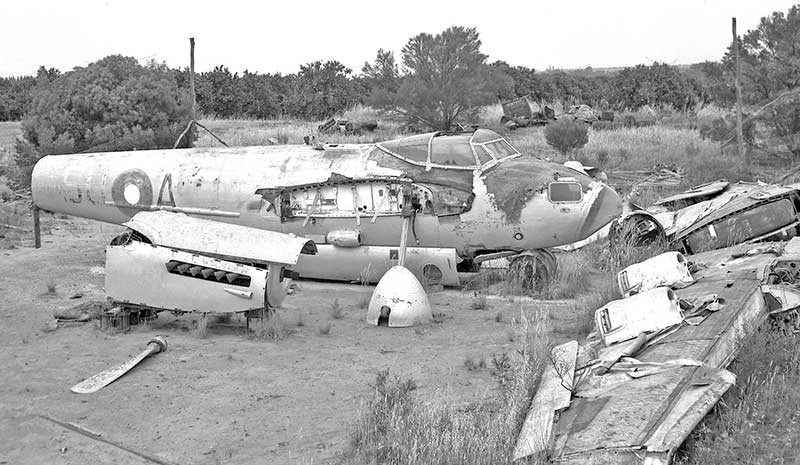
been an instructional airframe at RAAF Ballarat until put up for disposal and acquired for £50 by the property owner.
Re-assembly proved too big a job and it was left where it was unloaded. The "SU-A" code comes from its days with
the RAAF Survey Flight. The Mosquito was saved by Pearce Dunn for his Warbirds Aviation Museum at nearby Mildura
and is today under restoration for display by the RAAF Museum at Point Cook.
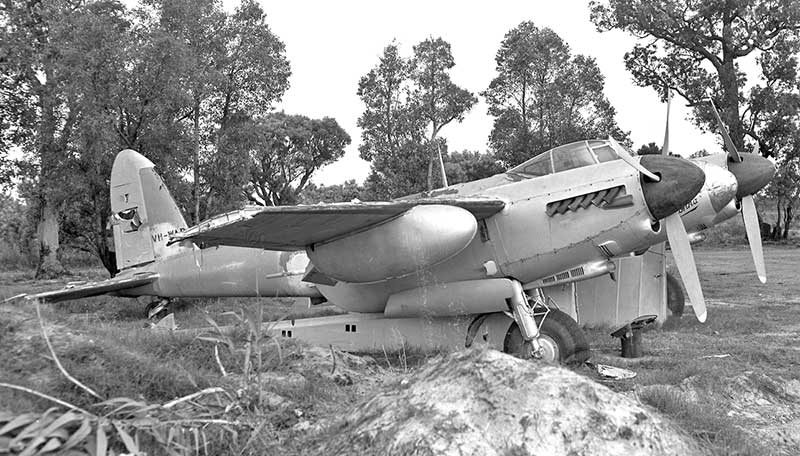
to enter in the 1953 London-Christchurch Air Race as VH-WAD The Quokka. His sponsor withdrew at the last moment and
the Mosquito was left in a hangar at Perth Airport. By May 1968 this invaluable aircraft had been towed to the airport dump site
where it rapidly deteriorated in the weather.

lifting on to a truck. The Mosquito survived lengthy storage and an attempt to ship it to an American buyer and is now displayed
in Canberra at the Australian War Museum.
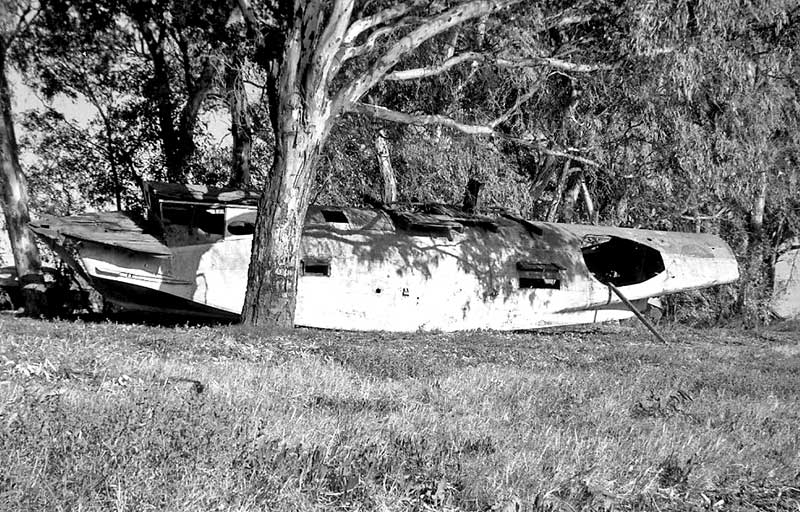
Lake Boga, Vic. Catalina fuselages were popular as barges to carry cut timber along the River Murray and some became house
boats. This unidentified fuselage was found on the banks of the river near Swan Hill in March 1965.

a former Royal Canadian Air Force PBV-1A Canso A, built by Canadian Vickers. After retired by Adastra, it was stripped for
parts for TAA's Catalinas in Papua New Guinea. In May 1963 it was outside the Bristol Aviation Services hangar at Bankstown.
Scrapped in 1967.
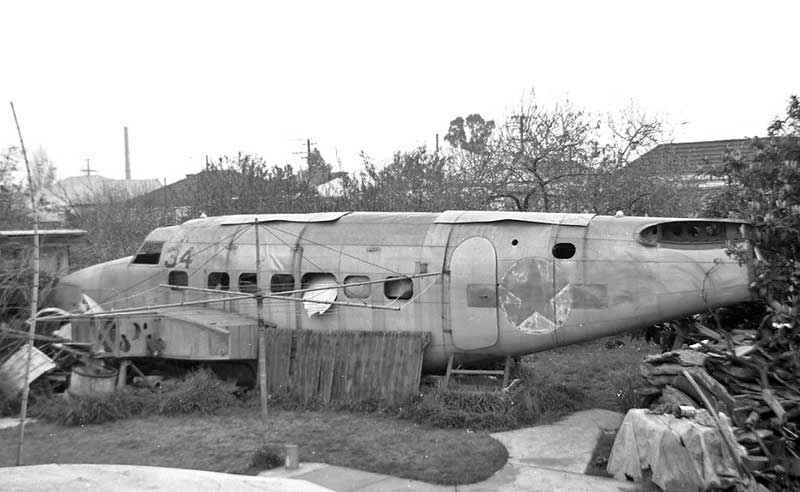
PK-AFP, it was one of the last Dutch aircraft carrying refugees from Java to Australia in February 1942, taken over by USAAC
as radio callsign VHCXJ and leased to Guinea Airways, Adelaide to fly military consignments for most of the war.
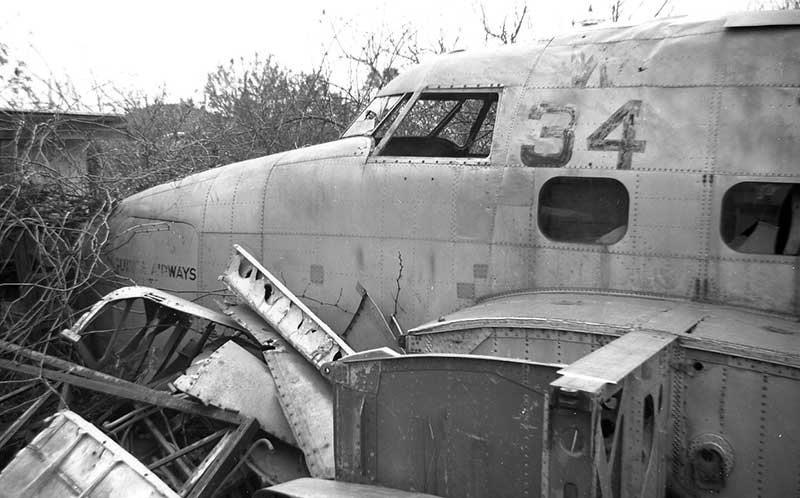
fuselage as a caravan. Guinea Airways' name is on the nose and behind the cockpit the wartime transport code "W34".
Both wings were there, with "US Army" painted on the undersides. In 1975 it was broken up and removed by a scrap dealer.
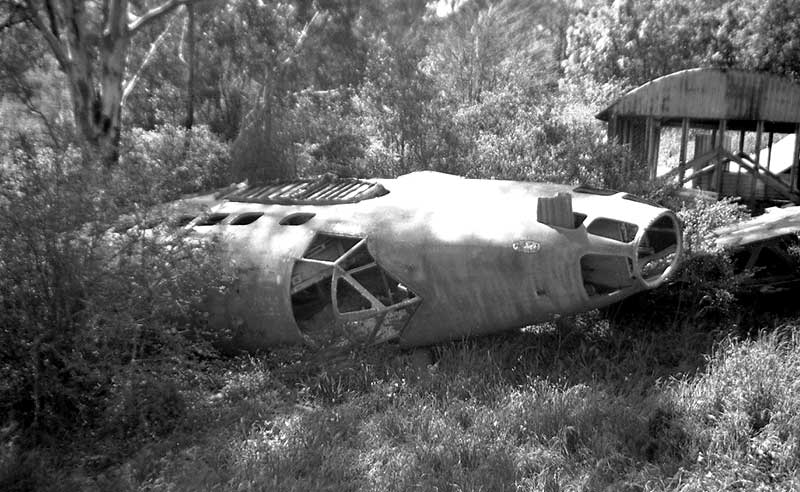
where the owner wanted to use it as a shack on his sloping block. During unloading from a truck, the fuselage rolled down the
slope and ended up on its side, and there it stayed. Here it is in October 1964, in RAAF camouflage. It was salvaged in 1972
by Warbirds Aviation Museum and moved to Mildura, Victoria.
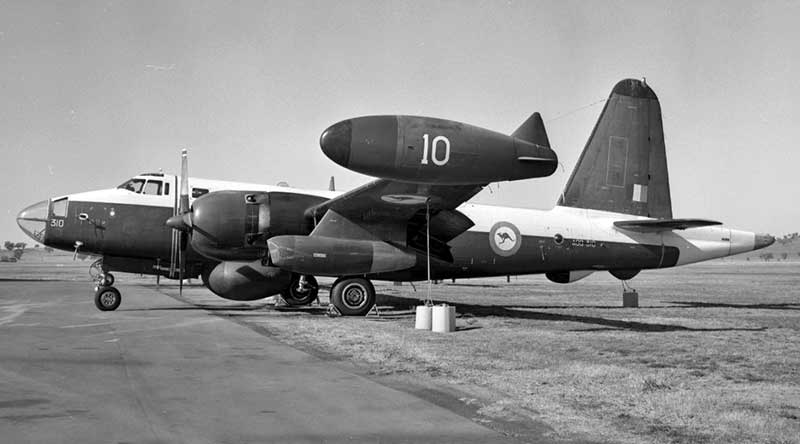
Wagga as ground instructional airframe INST No.3. Seen there in July 1967 parked next to A89-302, both dark blue and white.
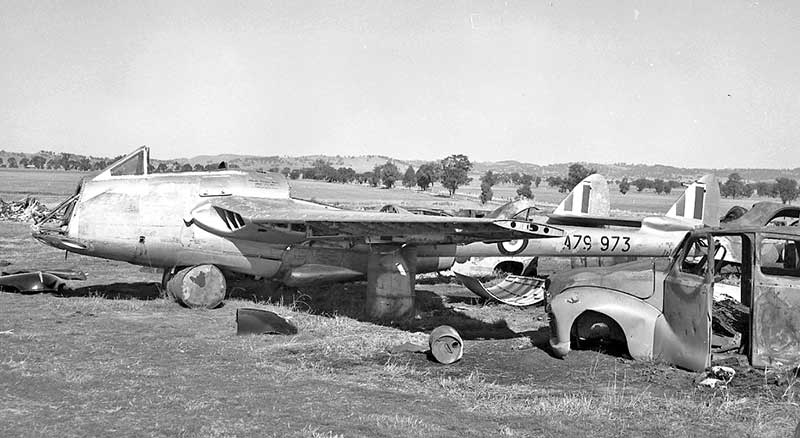
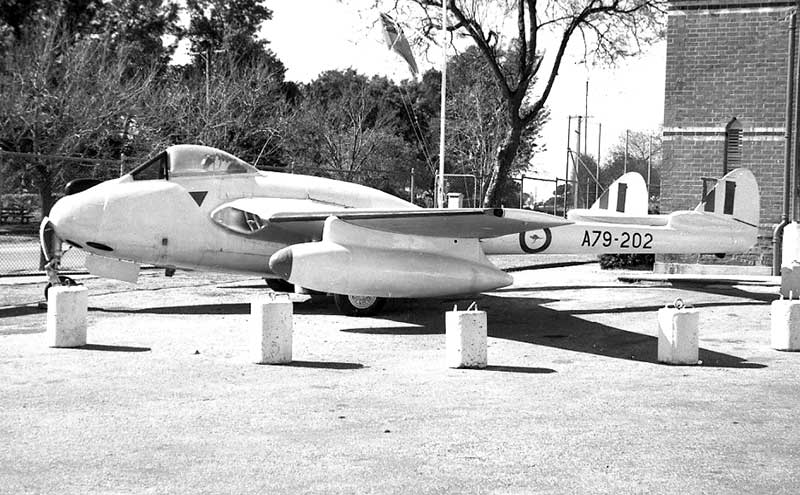
in January 1964 painted all white. It was later acquired by Warbirds Aviation Museum, Mildura and now is displayed in excellent
condition at the SA Aviation Museum at Port Adelaide.
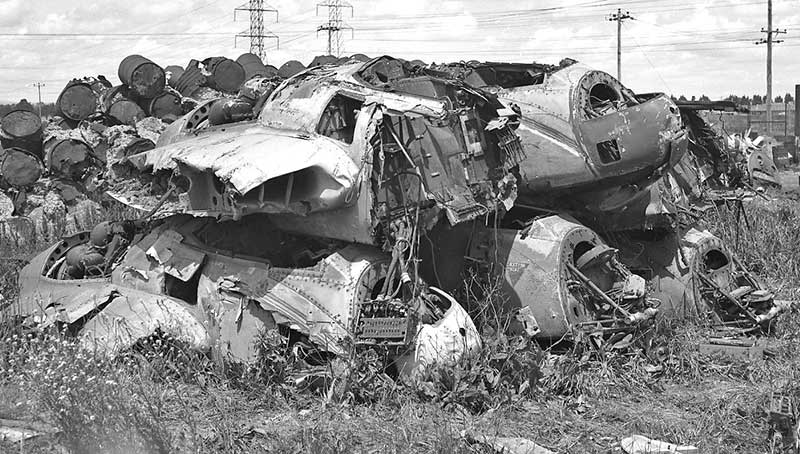
closest on the bottom was identified as Mk.30 A79-2, the second of the Bankstown production of 110 fighter model Vampires.
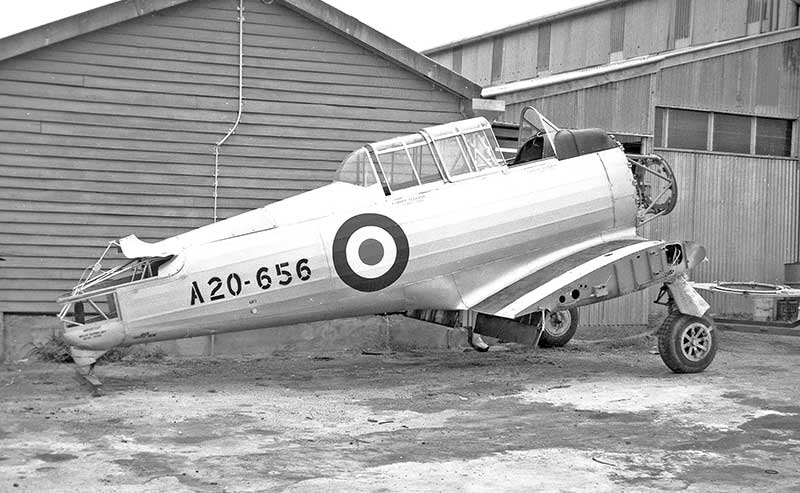
agricultural developments. The Wirraway had some interchangable parts and the same P&W Wasp engine, so could be used as
a test stand for engine ground runs.
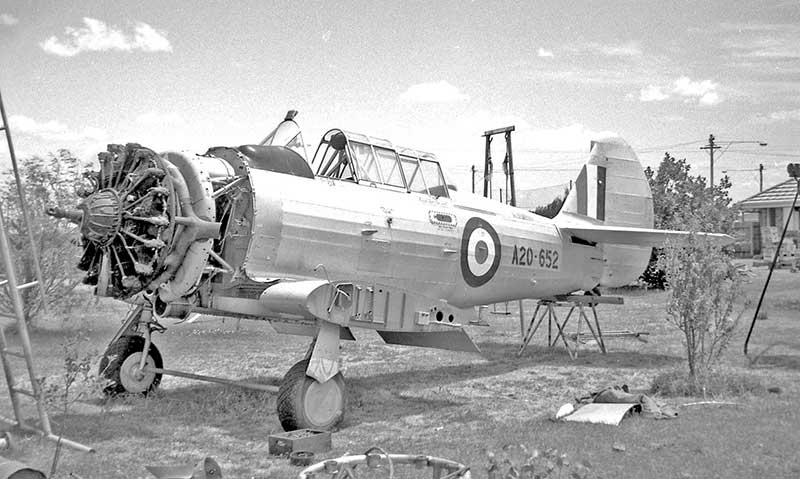
had been acquired two months earlier for £40 when CAC at Fishermans Bend disposed of 37 Wirraways in storage for rebuilding
as CA-28 Ceres. Ceres production however was terminated in 1963 after only 20 aircraft had been completed.
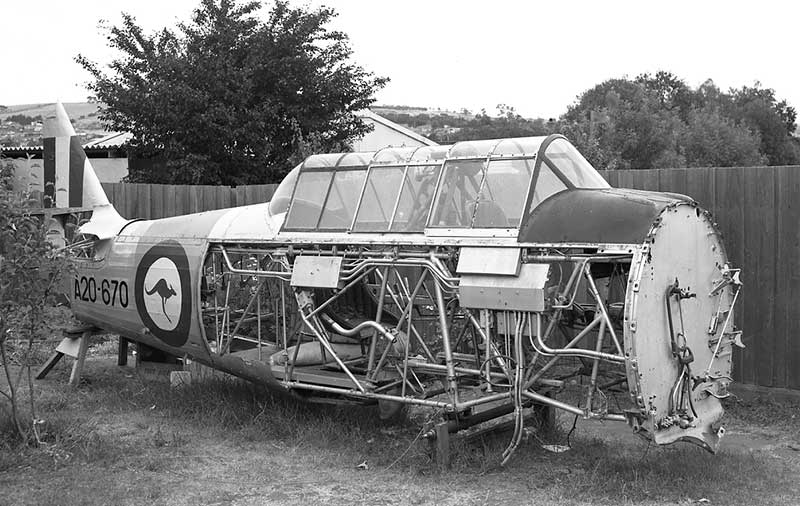
scrap metal dealer at Werribee who purchased 26 of the CAC Wirraway storage collection in 1963.
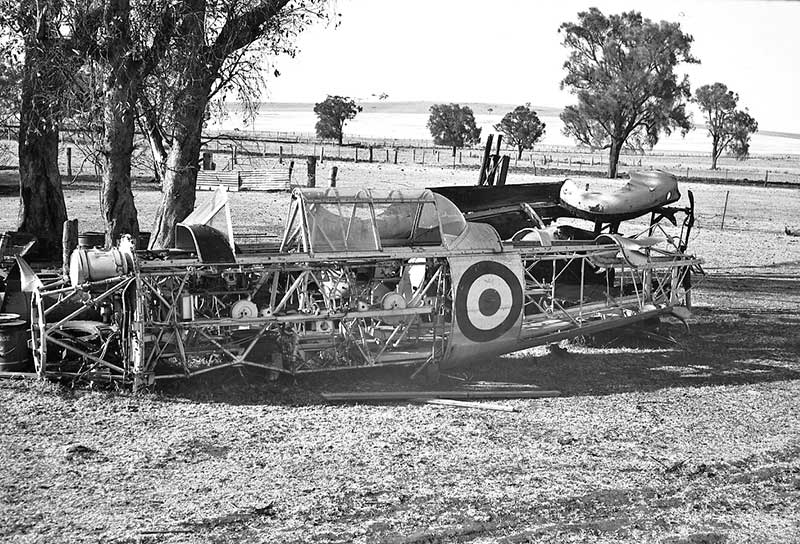
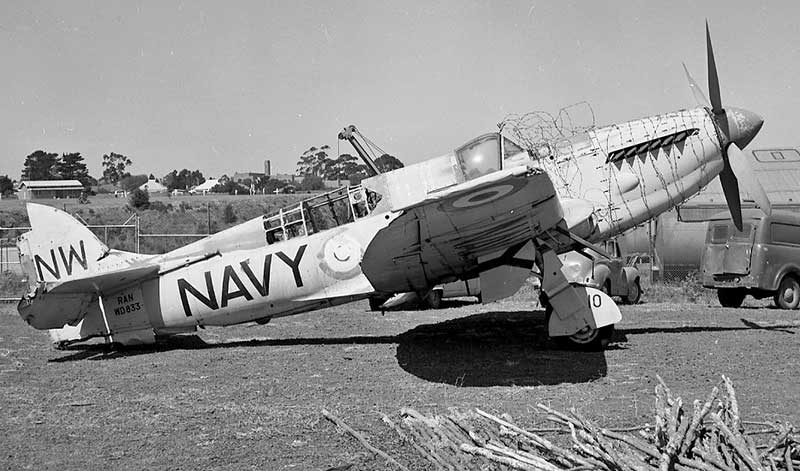
of Northcote in November 1967. It had Nowra code "NW910" and was saved, later being shipped to USA.
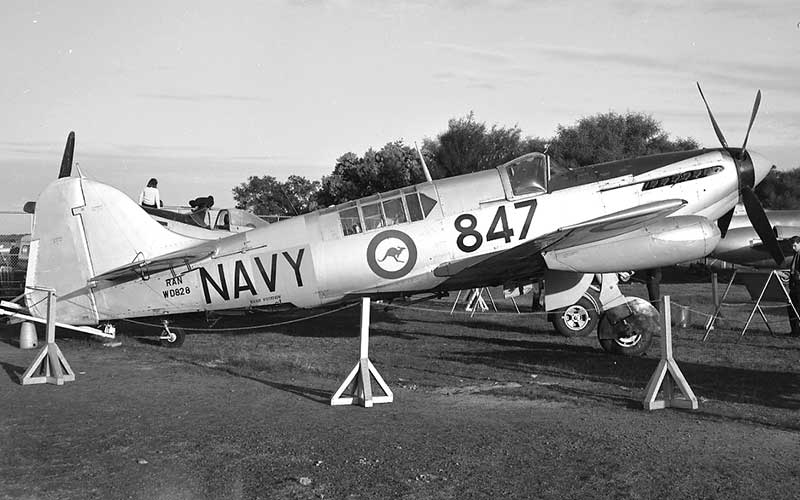
Terry Brain of Brain & Brown Airfreighters. Here it is on display at the museum in September that year.
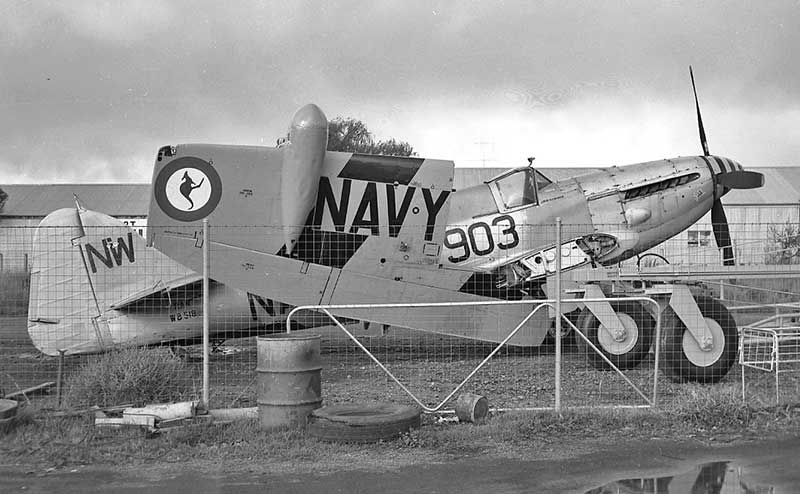
be mounted on a pole as a memorial. Photographed in a Griffith trucking yard in July 1967 prior to being hoisted on to the pole.
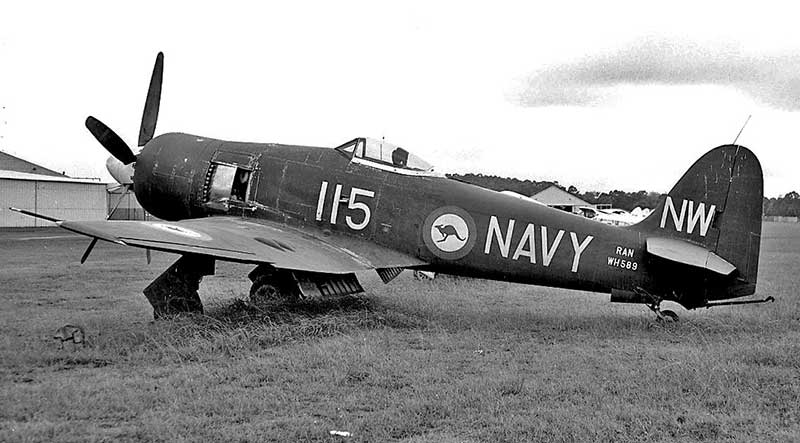
for military contracts, alongside their Mustangs. Pictured in January 1967 stored on the grass at Bankstown in weathered Navy
midnight blue paint scheme. It was not converted to civil by Fawcett but sold to Canada to go on to an exciting life as a warbird
and air racer in Canada, Great Britain and USA. Today it flies as highly-modified Reno racer Furias.
Will the real WH589 please stand up? Keeping warbird enthusiasts confused, a number of unrelated restored Sea Furies around
the world have been painted as RAN blue "WH589" over the years. This is the real WH589, to CF-CHB, G-AGHB, N4434P.
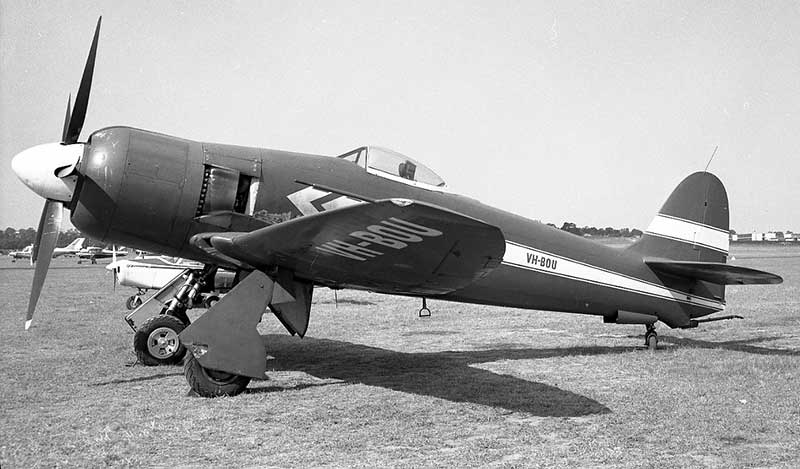
red and white paint scheme. This photo at Bankstown in September 1968. It was sold to Sydney identity Arnold Glass in 1970
who repainted it green and white before selling it to USA. After a crash in England it is now under rebuild in Sweden.
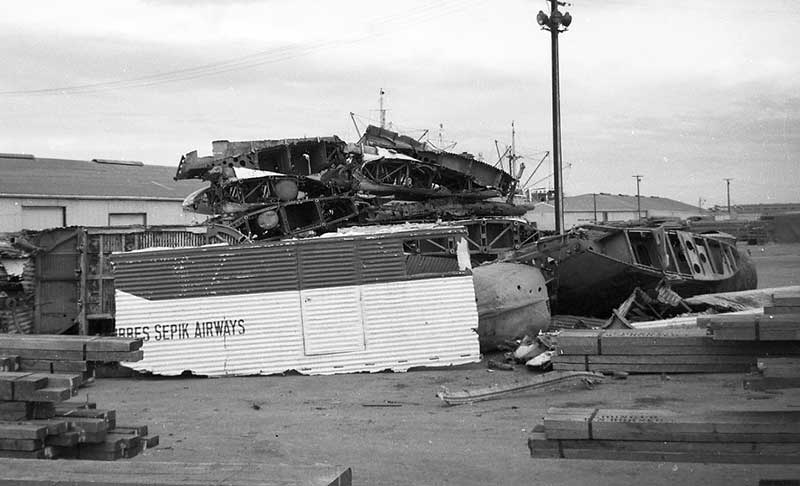
by Adelaide scrap metal dealers E. R. Way & Son of Thebarton. Also two former Gibbes Sepik Airways Junkers Ju 52/3m
trimotors VH-GSS & VH-GSW: the white & green corrugated fuselage section of one was propped up for the photograph.
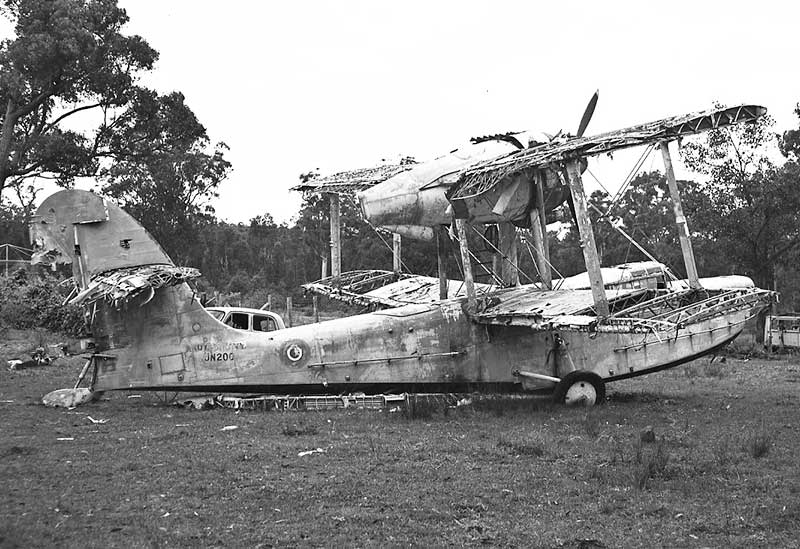
flying before being retired on a farm at Awaba NSW near Lake Macquarie. The civilian white & green paint job was soon
worn off by the weather, showing the original Royal Navy camouflage scheme beneath. Pictured in July 1967 when the
big amphibian was derelict but still in one piece. Its forward fuselage is all that was saved, now in the Navy museum at Nowra.
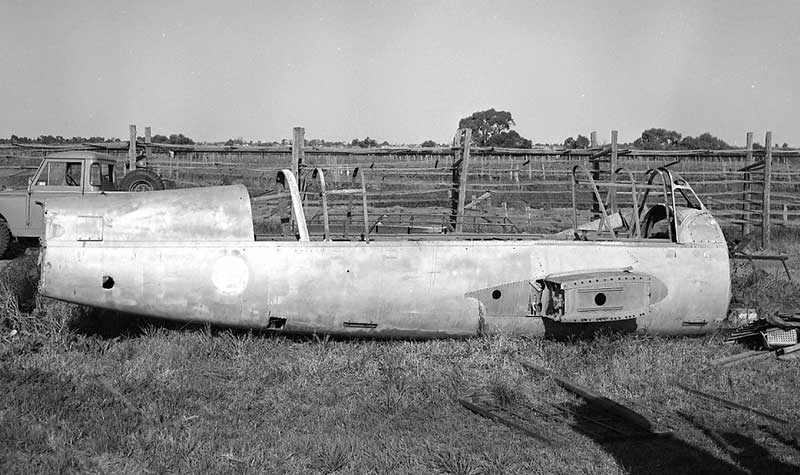
on an orchard at Merbein, near Mildura where it was dismantled and it floats were used as canoes on the nearby River Murray.
Here's the fuselage showing RAAF squadron markings "JE-B", as found in September 1967. Pearce Dunn acquired the all the
remains of this floatplane for his Warbirds Aviation Museum at Mildura Airport.
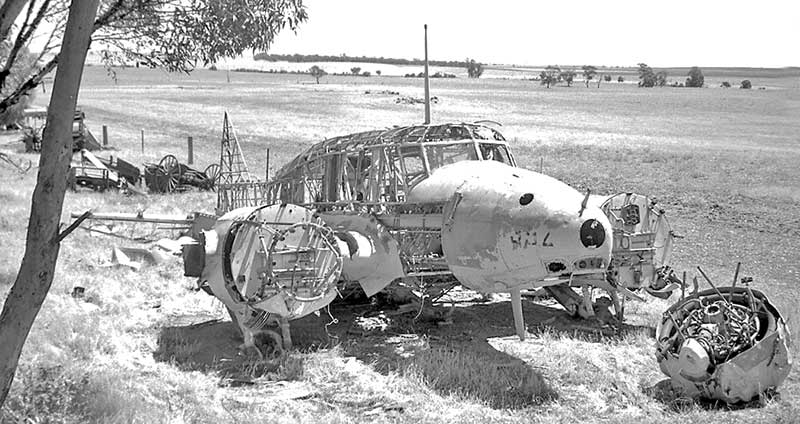
of the 150 Ansons and Oxfords tracked down across SA, mostly on farms. They were sold at low prices at "aircraft remnants"
sales held around Australia during 1947, which in SA were held at RAAF Stations Mount Gambier, Port Pirie and Mallala.
The detailed story is covered in ANSONS & OXFORDS ON SA FARMS under Australian Aviation